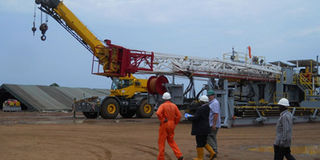EAC unity on oil pipeline is good

What you need to know:
In contrast, Uganda struck oil in the Albertine rift basin in 2006 but commercial production has been delayed
Kenya, Uganda and Rwanda have invited bids for a single consultant to oversee a feasibility study and initial design for the construction of a 1,300-kilometre oil pipeline to transport crude oil to the Kenyan coast.
Uganda and Kenya have discovered commercial quantities of oil and plan to start production in the next three years.
The consultant would be required to oversee the construction of a fibre optic cable from Hoima in Uganda through the Lokichar basin in northwest Kenya to Lamu, and tank terminals in Hoima, Lokichar and Lamu.
The pipeline is to be developed as a single project but split into two lots namely; Hoima to the Uganda/Kenya border and from the border to Lamu. According to reports from the ministry, interested companies and consortia have until July 25 to submit proposals.
The aim of having a single consultant for the whole project was to ensure consistency in the quality of the whole pipeline.
East Africa has become potentially lucrative for international oil firms after Kenya and Uganda’s commercial oil finds and discoveries of gas off the coast of Tanzania and Mozambique
Uganda estimates it has oil reserves of 3.5 billion barrels.
The plan for a single consultant and transaction adviser was approved by the governments of Kenya, Uganda, Rwanda, South Sudan, Tanzania and Burundi in early May.
These countries make up the East African Community, although South Sudan is still only an applicant to join the group.
Kenya’s plans for oil production have moved fast since Tullow and Africa Oil’s first discoveries were announced in March 2012.
In contrast, Uganda struck oil in the Albertine rift basin in 2006 but commercial production has been delayed by wrangling with oil firms over Uganda’s plans for a refinery and other factors and is not expected until 2016 at the earliest.
Africa Institute for Energy Governance




